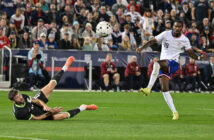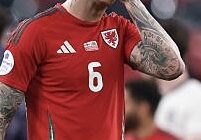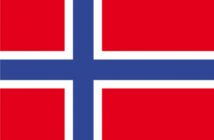
The Eagles have landed in Russia. No, not the California lads who sing Hotel California and Take It Easy but rather the Serbian Men’s National Soccer Team. For the eleventh time and first since 2010 Serbia are back in the World Cup. With a side of established veterans and some pretty good young prospects they are hoping that there stay in Russia will be a bit longer than expected. But do they have the chops to make it out of the Group Stage? Read on to find out!
Hope #1: That Mladen Krstajić can learn how to manage quickly.
In October of last year, the Serbian Football Association announced that head coach Slavoljub Muslin was fired after leading his side through World Cup Qualification. The move, at the time, seemed to be based off disagreements with the FA over team selection with Muslin opting to go with more established veterans than younger prospects. It was still a very peculiar move, given that Serbia hasn’t played in a major tournament since the 2010 World Cup.
Shifting from Muslin to Krstajić is a real gamble for Serbia as Muslin has close to 30 years of coaching experience while Krstajić has just five matches under his belt. Where Krstajić might have an advantage though is that he may have the respect of his players. A veteran of the 2006 World Cup he was the centerpiece of the Serbian defense that gave up just one goal during their run through qualification. While he doesn’t have the coaching experience that others at Russia will have very few will have his in-game and tactical experience. That will come in handy in Group E where they will face three sides (Brazil, Costa Rica, and Switzerland) that routinely qualify for the World Cup.
Hope #2: That Sergej Milinkovic-Savic can be the breakout star of the tournament.
It always seems that whenever Serbia makes a major international tournament that they have one or two players that are just about to be on the cusp of becoming a star. In 2006 they fielded a young defender from Manchester United named Nemanja Vidic. In 2010 a young lad by the name of Aleksandar Kolarov graced the world’s stage.
There are a couple of different candidates that could fill this spot at this year’s tournament for Serbia. Marko Grujic of Liverpool in particular has made a strong case in recent friendlies. But the player that everyone will be talking about, including the power clubs in Europe come the transfer window, is Sergej Milinkovic-Savic of Lazio. The 23-year old midfielder has the soccer world buzzing for his prodigious striking ability and crisp passing. His 12 goals last year were a career-best and helped Lazio, a side that has been through some very difficult times, get back into the Europa League.
Make no mistake about it: he will not be back at Lazio next season. The question is: Where will he go and for how much? Much of that will depend upon his performance at the World Cup. He has just three appearances for Serbia (another reason why Muslin was let go) and has yet to score a goal. Serbian supporters will hope that goose egg turns into a much more substantial number come tournament’s end.
Hope #3: That their defense can hold.
Serbia during qualification had three clean sheets and allowed more than two goals in a match just once, a 3-2 loss against Austria. Their defense through the years has been their best weapon in competitions like the World Cup. The Serbian style of play really emphasizes strong organization and play development through the center-backs. Given that Krstajić was a center-back himself one can expect a similar style of play in Russia.
The Big Fear: That an early goal might hurt their confidence.
On paper this Serbian side is as good as any side in Group E or at the World Cup. They have either beaten or given a serious challenge to all of the top contenders over the past few years. None of this new to them and despite this being their first major tournament in four years they aren’t minnows.
But while Serbia are a good side they are also their own worst enemy. Very often it seems if they fall down a goal they revert to a very conservative, over cautious style that doesn’t give them many opportunities to use their strengths in speed and building chances to their advantage. Case in point: their 2-1 loss to Morocco back in March.
As a player Krstajić had a tendency to never give up on plays and to fight for 90 minutes. This side needs that same mentality especially early on if things don’t go their way. This will be a very, very close group that will go down to Goal Differential. Mental mistakes and errors might be the deciding factor as to who goes and who goes home.
Apologies, but no results were found for the requested archive. Perhaps searching will help find a related post.Serbia
Nothing Found
2018 World Cup
![Prost International [PINT]](https://prostinternational.com/wp-content/uploads/2021/08/PINTtFontLogoRoboto1536x78.jpg)


